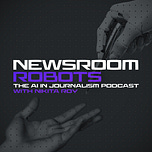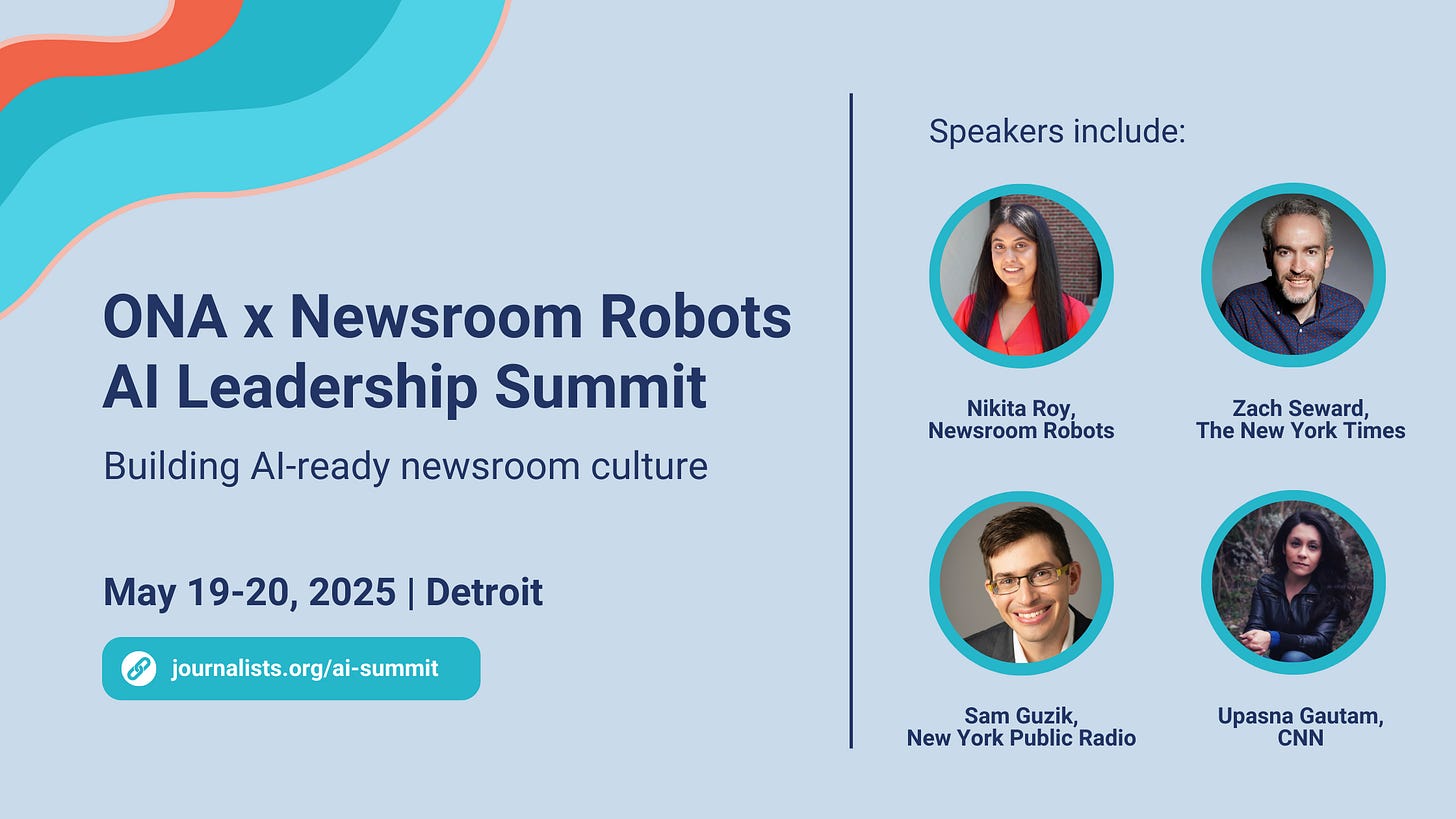When officials in Santa Clara County (home to Silicon Valley) publicly proclaimed they were not sharing data with U.S. Immigration and Customs Enforcement, they likely did not expect to be caught in a contradiction. Yet behind the scenes, those same officials had recently signed new contracts with the federal agency — a fact that might have remained hidden if not for a new generation of AI tools developed at Stanford University.
This discovery, made possible by tools developed at Big Local News at Stanford, offers a glimpse into how AI is helping resource-strapped local newsrooms maintain their watchdog role in communities across the United States.
In my recent Newsroom Robots conversation with Cheryl Phillips, who founded the Big Local News initiative, I learned how technology is opening up new possibilities for accountability journalism — at a time when local reporters are stretched thinner than ever.
“A reporter today might have to cover 20 cities, whereas 15 years ago, it might have been one or two,” Phillips explained. This reality has created dangerous blind spots in local coverage — gaps that Big Local News is working to eliminate through innovative data tools.
At the heart of this effort is a suite of technology solutions built with local journalists in mind — especially those short on time, resources or technical know-how. One standout is Agenda Watch, a tool that automatically collects and analyzes city council agendas and minutes from hundreds of local governments.
What makes this tool so powerful is its ability to search across jurisdictions and spot patterns others might miss. In Santa Clara County, researchers combined Agenda Watch data with federal contract records to uncover the gap between public promises and what was really happening behind the scenes.
“We were able to identify moments in public meetings, like several years worth of public meetings, where county officials essentially proclaimed that they were not sharing data with ICE, even though they had just inked new contracts with ICE — like the day before,” Phillips said.
This kind of accountability reporting once required months of manual document review by multiple journalists — a luxury most local newsrooms can no longer afford.
Phillips’ work highlights several important shifts at the intersection of technology and local news:
1️⃣ Using AI to find the needle in the haystack
Beyond meeting minutes, Big Local News is developing tools that scan public records for noteworthy information. One example is its Audit Watch tool, which flags problematic financial audits of government agencies and contractors — alerting journalists to potential financial misconduct that might otherwise go unnoticed.
“We pull from that clearinghouse every single day all of the problematic audits that have some kind of problematic accounting flag,” Phillips said. With thousands of such documents produced annually, no human team could realistically monitor them all manually.
2️⃣ Making complex data accessible to every journalist
Another tool, called Data Talk, is transforming how journalists interact with campaign finance information. Using natural language processing, it allows reporters to ask straightforward questions like “How much have Kamala Harris and Donald Trump raised and spent?” without needing to understand the complex underlying database structure.
Importantly, the system maintains transparency about its process. “As the agent does its work, it tells you what it's doing ... I'm going to this database, this table, this table, I'm pulling these things. And then it explains what it did, both in plain English and it gives you the code,” Phillips said.
3️⃣ Creating a collaborative ecosystem rather than standalone tools
Perhaps the most significant innovation isn’t technological but structural. Big Local News has developed what it calls the DART Matrix — for data, algorithms, recipes and training — to match newsrooms with appropriate resources based on their existing capabilities.
This approach acknowledges that not every newsroom needs — or can use — the same tools. Some need complete data feeds and API access, while others benefit more from story templates and training sessions. In one example, Phillips described how Big Local News helped rural newsrooms analyze nursing home staffing data:
“We trained all these really rural newsrooms, using a spreadsheet, how to take their part of the data, analyze it and write a story about it. So we saw basically about a dozen local stories come out of that one data set,” Phillips said.
As local newsrooms continue to face financial pressures and staffing cuts, tools developed at Big Local News offer a practical pathway to maintaining journalism’s essential accountability function. By handling the repetitive, time-consuming aspects of public records monitoring, these AI systems free journalists to do what they do best: ask tough questions and tell compelling stories.
🎧 Listen to the full conversation on Apple Podcasts, Spotify or other major podcast platforms.
The ONA x Newsroom Robots AI Leadership Summit is happening May 19-20 in Detroit! This free, unconference-style event is a unique opportunity to join industry peers — from C-suite executives and AI product managers to local journalists experimenting with AI — as we explore the future of news and tackle the culture and leadership challenges facing our industry.
We’ve designed the summit to be practical, collaborative and future-focused:
I’ll kick things off with a landscape talk on where AI in journalism is headed and the trends that we as an industry need to prepare for.
We’ll then dive into a dynamic design sprint session led by Upasna Gautam, Product Manager for Digital News Platforms at CNN.
Zach Seward, Editorial Director of AI Initiatives at The New York Times, will join us for a special live recording of the Newsroom Robots podcast.
We’ll wrap up the two day summit with a future scenarios workshop led by Sam Guzik, Senior Director, Product Management at New York Public Radio and Senior Expert Advisor at Future Today Strategy Group.
But you are the shapers of this unconference. Bring your challenges, your questions, and those ideas you’ve been wanting to develop. This summit is all about sparking collaboration, sharing insights, and building actionable solutions together.
I’d truly love to see you there!
If you're passionate about shaping the next chapter of journalism, don’t miss this chance to be part of the conversation. Reserve your spot today before we reach capacity!











